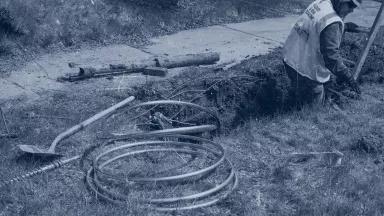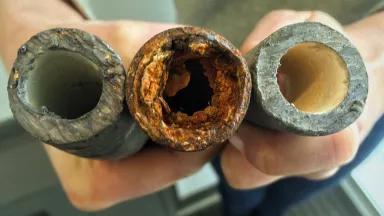Getting the Lead Out: Removing Lead Pipes Would Yield Hundreds of Billions of Dollars in Health Benefits
Removing lead service lines could save the United States an estimated $786 billion from avoided health impacts over the next 35 years.

Vanessa Bly Photography
Scientists and health experts agree that there is no safe level of exposure to lead. However, across the United States, we are exposed to lead in our drinking water through lead service lines, the lead pipes that connect homes to the water mains in the street. The only way to be sure that lead will not leach or flake off from these lead service lines is to remove them from use and replace them with nonleaded lines.
Removing lead service lines would result in significant cost savings from avoided health impacts. In fact, over the next 35 years, the United States could save an estimated $786 billion in health costs (see table 1 below). Compare that to the total national cost of removing all lead service lines—which would be in the range of $46 billion to $56 billion—and there’s no question about the right course of action.
This paper includes state-by-state estimates of health benefits, which range from $124 million for Alaska on the low end to $89 billion to $99 billion in Illinois and Florida, respectively, at the high end, as well as policy recommendations for next steps.







